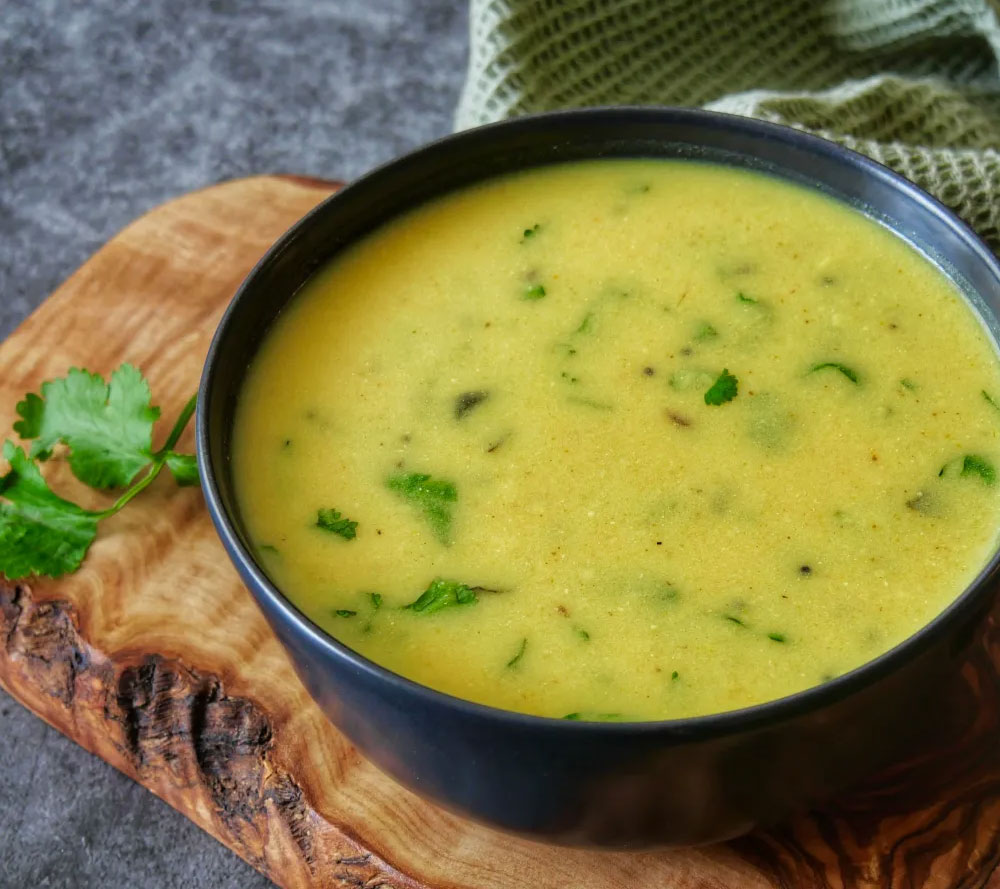A “karhi” is just heated and flavored yogurt. Since yogurt curdles when it is boiled, it has to be stabilized with starch. That starch in India is usually chickpea flour (though it could be rice flour), which adds its own nutrients to the dish. All Indians eat karhis, but they vary considerably from region to region. Delhi’s karhis are very thick, colored yellow with turmeric, and filled with bobbing dumplings. Gujarati karhis can be sweet and flavored with cloves. This takka karhi, from the Saraswat Brahmins of the western Indian Konkan Coast, is thin, unsweetened, and almost white. It is generally eaten with rice, but it can also be served in individual bowls and either just drunk with the meal or eaten with flatbreads, along with other vegetables and dals.
It is best to make this dish with sour yogurt. Simply leave it out of the refrigerator in a warm spot for 24 hours or longer, until it has soured a bit, or use an acidophilus yogurt, which is already sour.
This recipe may easily be doubled.
SERVES 2–3
• 2 cups plain yogurt (do not use Greek yogurt here)
• 2 teaspoons chickpea flour (besan or gram flour)
• ⅓–½ teaspoon salt, or to taste
• 1 teaspoon olive or peanut oil
• Generous pinch of ground asafetida
• ¼ teaspoon whole cumin seeds
• 1 dried red chili or 1 fresh hot green chili, split in half lengthwise
• 2 cloves garlic, peeled and crushed
1. Put the yogurt in a bowl and whisk until smooth. Slowly add 2 cups of water, whisking as you go.
2. In a separate bowl, mix the chickpea flour with a tablespoon or so of water to make a smooth paste. Add the yogurt along with the salt and whisk again.
3. Put the oil in a small pan and set it over medium heat. When hot, add the asafetida and the cumin seeds. Let the seeds sizzle for a few seconds, then add the chilies. Stir once, add the garlic, and stir a few more times.
4. Pour in the yogurt sauce, stirring constantly while it comes to a gentle simmer. Allow to simmer on a low heat for 2–3 minutes, stirring all the time.








